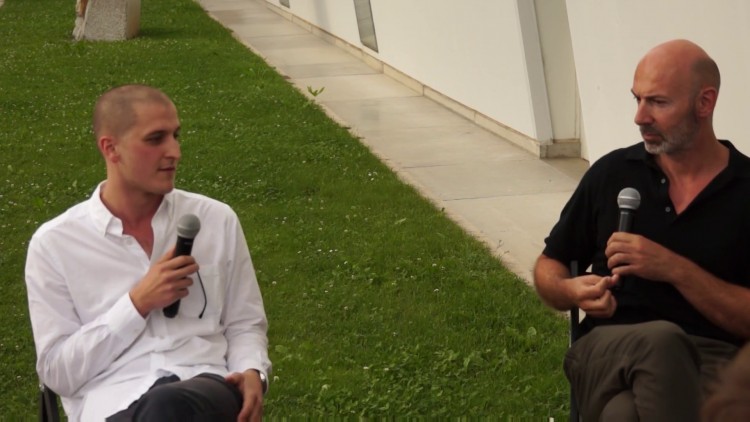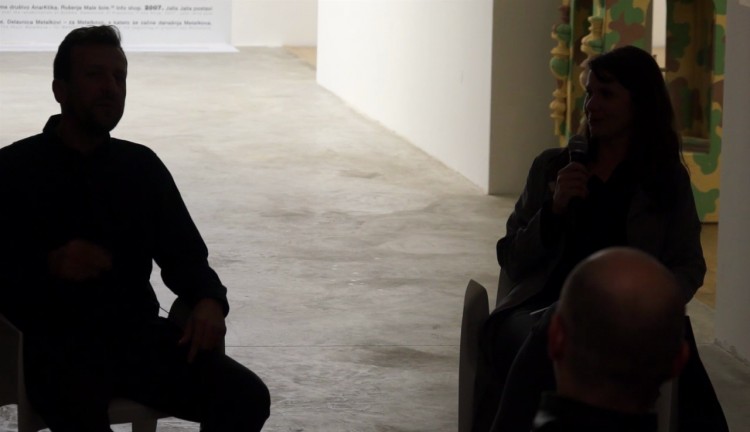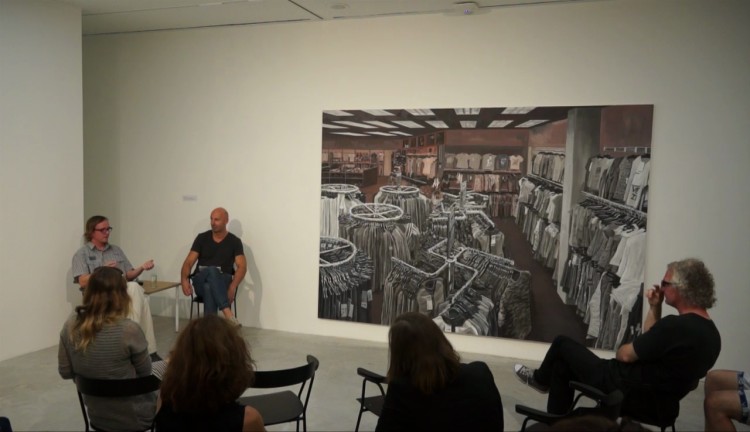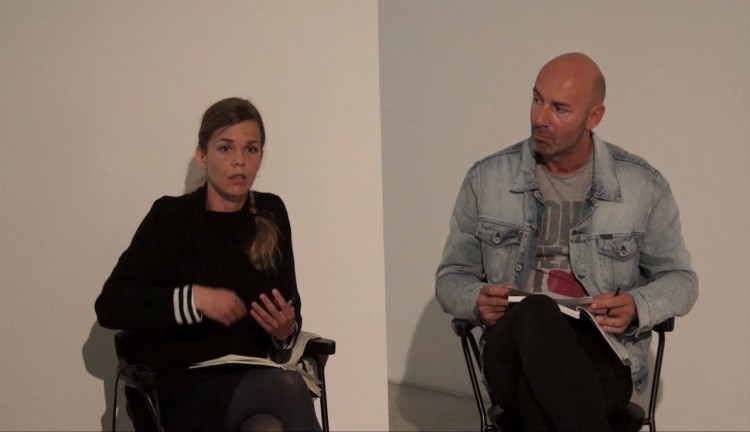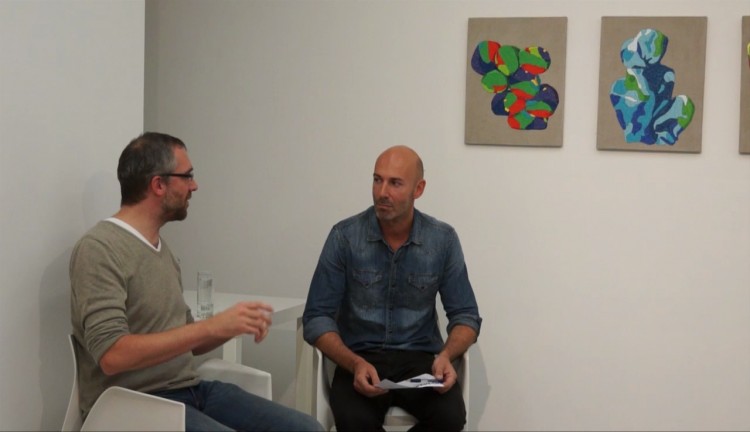A look through a lens of ice: the distorted world reflects a vague, glimmering surface peopled with twisted forms offering momentary glimpses of the viewer’s own reflection. The spectacle takes place in the bowels of the earth, phantasmagorical images of ephemerality emerging in underground caves. The beauty and the danger of a flaw arising as an unconscious impulse. An ice-cold look transforming what is rare into something even more precious.
At the core of the duo P L A T E AU R E S I D U E’s installation is an ice mass, or more precisely, a stalactite brought by the artists from an ice cave to the museum and kept there as a museum exhibit. This is a reminder of the rapid disappearance of ice as a consequence of global warming, which has affected ice deposits in Slovenia as well; at the same time, the artists were guided by their fascination with ice and its optical properties, which led them to experiment and identify creative potential in a block of ice. They fashioned an ice lens out of the broken stalactite, placing it in a camera casing that they assembled themselves. In this way, the ice lens became an entirely new artistic medium, creating an interplay between natural phenomena and the viewers’ perceptions. But what is also present in this kaleidoscope of images is the contradictory idea of using a material that is in the process of disappearing to capture ephemerality itself. The view through the ice lens is cut off when the lens melts, bringing the recording to an end. The lens is thus highlighted as a perverse object, mediating our admiration of something existing in circumstances unfavorable to its survival.
The artists’ strategy brings together the sublime and the visionary. Their awareness of the negative consequences of climatic and environmental change is not expressed in terms of an apocalyptic threat but rather as a gesture of transmitting to the visitor their own experience and personal understanding of our endangered environment. To make this possible, they set up an all-encompassing installation in an attempt to simulate nature within an institution. It offers an interpretation of a cave environment, designed using live materials, fog, intense lighting, moisture, smells and sounds displacing both the real and the imaginary.
The process of recreating a natural environment based on their experience of recording and researching a specific site (in this case, the ice cave at Kunč on the Kočevski rog plateau) also serves to shed light on the complexity of natural phenomena.
The resulting installation is an atmospheric and sensory experience that attempts to shift ways of seeing the world. What marks the turning point or transition is the visitor’s passage into the interior of the installation; additionally, this coincides with the sudden shift between different modes in the video playing inside. The first mode is documentary and serves to introduce the visitor to the story; the second one is abstract, recorded through the ice lens. This shift also corresponds to the artists’ descent into the underground world and their return, which they associate with a mythological understanding of ritual and initiation and, in this case, with the transformation of a person’s way of seeing and his or her visceral reaction to the experience. Both individual change and ritual had already played a key role in the duo’s previous artistic project, Ex Topia, similarly dedicated to exploring the disappearance of ice formations of the Triglav glacier. Additionally, both Ex Topiaand their current project Alma mater follow the same principle of correspondence and interdependence, linking the high mountain range and the underground, the above and the below.
Thus, the title Alma mater is understood in direct contrast to what it usually refers to – a university. Here, it corresponds above all to the natural environment and the changing atmosphere, leading the authors away from a doctrinaire attachment to the education system. The artists emphasize nature as their first and most important education setting. In the words of P L A T E AU R E S I D U E: “There is something in the human being with which he or she tries to simulate the natural and represent it in his or her own way, as intimately as possible. Besides, there is something thrilling about ice!”


